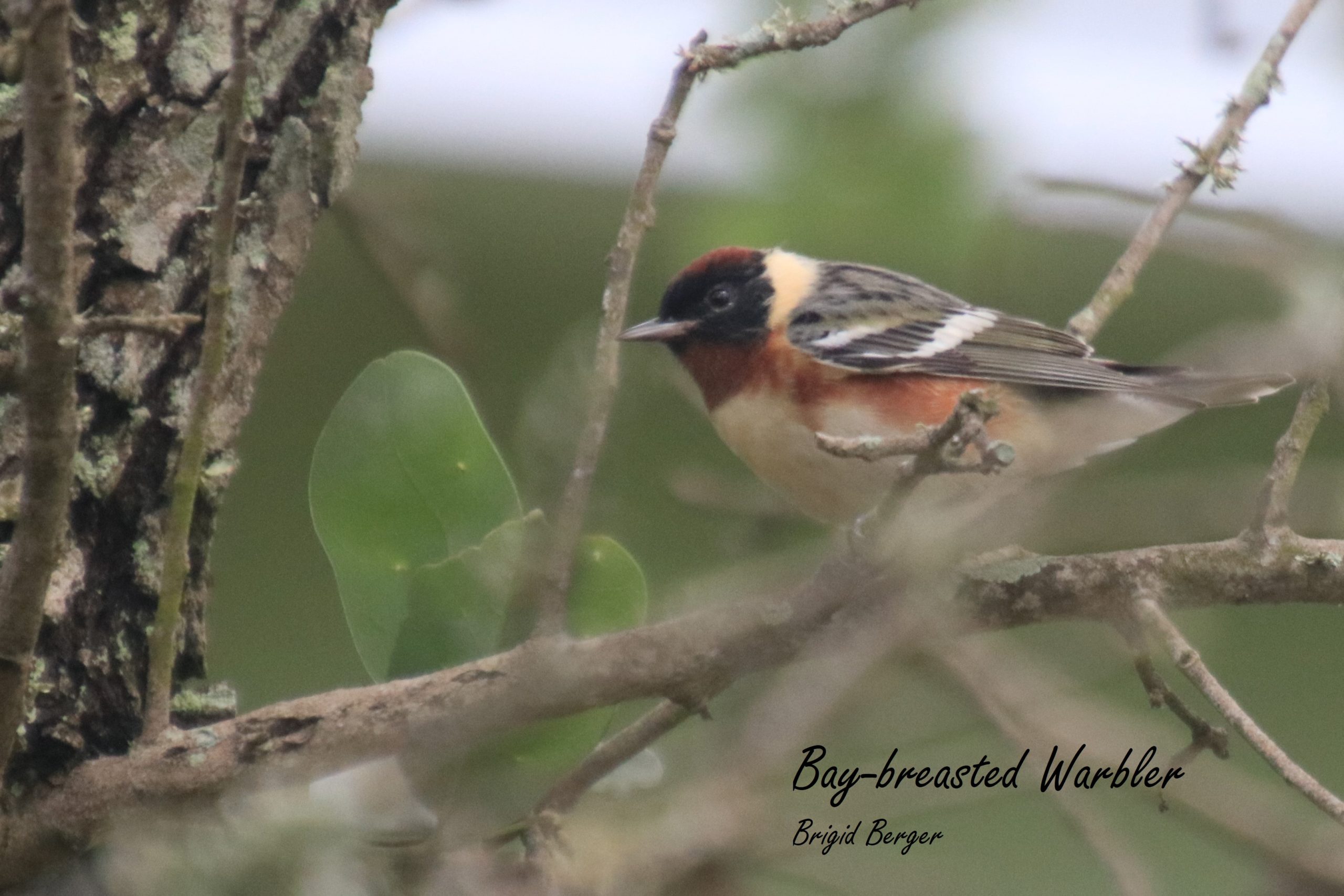Birding in Port O’Connor
Bay-breasted Warbler

Birding is a popular recreational activity along the Texas Gulf Coast and Port O’Connor offers some of the best birding in the state. Boggy Nature Park (3rd & Taylor) is a featured site on the Calhoun Loop of the Great Texas Birding Trail and an eBird Hotspot. The wide variety of habitats at Boggy and throughout the Port O’Connor area host over 300 species with each season providing unique birding experiences.
Bird watching is growing in popularity as a recreational activity along the Texas Gulf Coast, with Port O’Connor being one of the best birding “hot spots” in the state.
Winter is one of the birdiest times with thousands of ducks dabbling in the warm shallow coastal waters. Redheads, Pintails, Bufflehead and Scaup are common in the grass flat next to the Little Jetty (Commerce & Washington). Ruddy Turnstone, Dunlin, Sanderling and Sandpipers are found along the Matagorda Bay shorelines. The majestic American White Pelican and Sandhill Crane are regular Winter Texans too. In recent years the 5-foot tall, snow-white, endangered Whooping Crane has been wintering along Powderhorn Lake, the Intercoastal Canal on private ranches and the shorelines of Matagorda Island. The bays become an “Osprey-land” as an abundance of these fish-eating raptors can be seen with their catch atop canal markers and dock posts. Other winter treats are flocks of American Robins foraging in a yard or gobbling Yaupon berries and hearing the high-pitched trills of Cedar Waxwings feasting in Hackberry trees.
Springtime brings in little songbirds as they stop here to rest and refuel after their night’s journey across the Gulf of Mexico. These brightly colored migrants can be spotted among coastal live oak trees and brushy areas throughout town. Beautiful warblers such as Blackburnian, Chestnut-sided and Bay-breasted are regulars in April along with Orioles, Tanagers, Grosbeaks and Buntings. Watch for them after a cold front as they spend a few days here before heading North to their breeding grounds.
 Scarlet Tanager
Scarlet Tanager
Spring & Summer is nesting season along the Gulf Coast. White-tailed Hawks, Black-shouldered Kites and Loggerhead Shrikes are a common sight on powerlines. If you plan to do some beach combing or fishing, watch carefully for ground nesting birds such as the Wilson’s Plover, Least Tern and American Oystercatchers. Herons, egrets, gulls, terns & skimmers nest in large colonies, the largest of which is Audubon’s Chester Island, also known as Bird or Sundown Island. The island is just a few miles east of Port O’Connor in Matagorda Bay and was made from the dredging of the Matagorda Ship Channel back in the 60s. It is the nesting site of about different 18 species. The calling of thousands of birds can be heard from quite a distance with a constant stream of birds flying to and from the island. You can view this annual phenomenon from boat, at least 50 feet away, as docking or entering the island is prohibited by federal law.
Summertime brings unique species to Port O’Connor. Purple Martins build their nests in colonies and many Port O’Connor residents gladly provide apartment or gourd-type bird houses for these insect eating fliers. The Common Nighthawk, another insect-eating bird, can be seen and heard making aerial dives and loops especially at dusk and dawn. Keep an eye to the sky over the water and you’ll likely spot the large angled-winged Magnificent Frigatebirds gracefully gliding. Watch for these pirates to chase gulls and terns forcing them to give up their catch.
 Chestnut-sided Warbler
Chestnut-sided Warbler
Port O’Connor has many beautiful resident birds as well. That pink bird? No flamingos here! That’s a Roseate Spoonbill. Wading through the shallows, it swings its head side to side catching fish and shrimp with a snap of its bill. Black Skimmers fly low over the water snatching fish on the fly. Great Egrets and Tricolored Herons are among the wading birds seen daily along shorelines while Royal, Sandwich and Caspian Terns plunge-dive for fish. The White Ibis with its bright red, sickle shaped bill and blue eyes become yard birds after a good rain and probe the soft ground for grubs and insects.
No matter the season, one doesn’t have to look far in Port O’Connor to see an abundance of birds.
For more information about local birding hotspots visit the Great Texas Coastal Bird Trail website.
